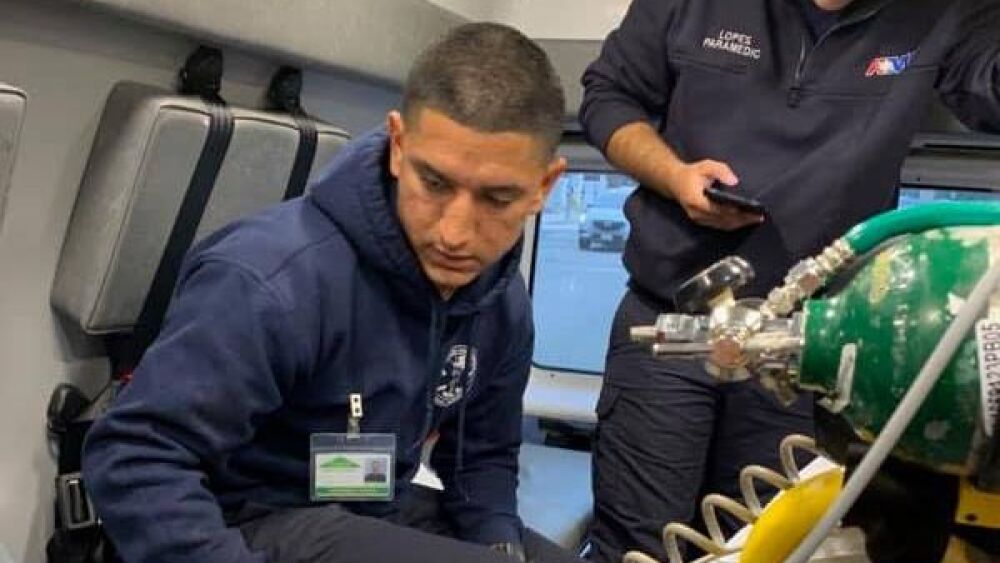Do you want to be a better EMT? Advance your education? Want to find a new sense of purpose in your job and gain higher levels of job satisfaction? This article is intended to change some of the current ways of thinking when it comes to the day-to-day life of an EMT/medic in a system which runs interfacility transports and/or 911 response in a metropolitan area.
I come from an ambulance agency that runs a mixture of interfacility and 911 calls. The general culture in such an agency is one in which members prefer the excitement of the 911 response, naturally, over an interfacility transport.
Here are three scenarios with an opportunity for improving your expertise and knowledge.
1. You’re transporting a patient from a psychiatric facility to the ED for medical clearance. Have a conversation with your patient. Ask them if they like this particular facility, and if they have been to others. What are the differences between other psychiatric facilities that they have been to (i.e. treatment by the staff, general rules of the facility, quality of the food). This is information you can only obtain from an insider, and this is information that you could pass on to other psychiatric patients during your 911 calls. These tools can be used in verbal de-escalation techniques when managing agitated patients during psychiatric episodes [1].
2. You’re transporting a patient from a stand-alone ED to a hospital with specialty services for a GI consult in a patient with a suspected GI bleed. From a prehospital perspective, there’s not much that you are doing for this patient other than giving them a ride. In my opinion, the above example contains the potential for a significant gain of clinical expertise. Let’s say this patient presented to the ED with complaints of progressive generalized weakness, fatigue and dark-colored stools. As the EMT/medic, I encourage you to read the transfer packet, the doctor’s note, lab values and radiology report if applicable.
Take note of the patient’s skin signs. Are they cool and pale? Does this correlate with their hematocrit and hemoglobin levels? What does it mean when occult blood is found? These are things you can either ask or look up for yourself. Sometimes, nurses or doctors may not be all that willing to answer some of these questions, so the responsibility is on you to look these things up. In this era of technology, searching for these answers has become convenient.
3. You’re on a chest pain interfacility transfer. Most of our NSTEMI transfers are another example of a call that is just a ride to another hospital for cardiology consultation – not much that we are doing for them in the prehospital setting. But when going through these transfer packets, take note of the troponin levels and be prepared to relay this number to the receiving staff. Are there other abnormal lab values, such as BNP? What is the meaning of these abnormal lab values, and how do they correlate with the complaint of chest pain? Practice your chest pain assessment skills (i.e., OPQRST) and compare them with the same assessment that will most likely be performed by the receiving doctor.
Learning on the job
Learn the language of medicine by reading your transfer packets, even if it’s out of your scope of practice. Use this language when giving a report to the receiving nurse or doctor. This is the only way that respect will be earned from other healthcare providers – if we can prove to them that we are competent and knowledgeable. They are not with us on scene of motor vehicle collisions or running a cardiac arrest, so they will never know our capabilities under those circumstances, so we must approach them through clinical lingo and demonstrating our clinical expertise.
All of these situations would serve to better your assessment skills on scene of a 911 call, and subsequently during the patient handoff when giving a report to the receiving nurse or physician. This also gives us a sense of purpose when we change our way of thinking. When these calls have meaning and provide us with greater clinical expertise, we come to appreciate these experiences.
Interfacility transports can make us feel more like ambulance drivers and less like healthcare providers. These feelings may be contributing factors to burnout in EMS, loss of interest in the job, and increased turnover rates through a reduced sense of personal accomplishment [2]. In my experience, it also seems to build tension among employees and the private ambulance company, as these types of calls are lucrative for private EMS, yet less desirable to run for the employee.
These techniques of learning from your transports will be helpful if you decide to advance your education. Even from going to EMT/AEMT to paramedic, learning on the job will make it easier for you when you decide to upgrade.
How do I know? This has been my method of learning from being an EMT to now an MD candidate in medical school. Along every step of the way, I learned to be grateful for the knowledge that I had gained from previous experiences. It has allowed me to approach medical school with greater confidence and a higher level of clinical acumen than my counterparts. Not to say that medical school is necessarily easier, but it makes learning more enjoyable when you have a strong background in medicine.
Read more:
Achieving EMS mastery
Find a mentor, start with what’s important and train like you fight to accelerate your EMS training and become an expert
References
- Richmond JS, Berlin JS, Fishkind AB, et al (2012). Verbal De-escalation of the Agitated Patient: Consensus Statement of the American Association for Emergency Psychiatry Project BETA De-escalation Workgroup. The western journal of emergency medicine, 13(1), 17–25. https://doi.org/10.5811/westjem.2011.9.6864
- Almutairi MN, El Mahalli AA. (2020). Burnout and Coping Methods among Emergency Medical Services Professionals. Journal of multidisciplinary healthcare, 13, 271–279. https://doi.org/10.2147/JMDH.S244303
This article, originally written in October 2022, has been updated.














